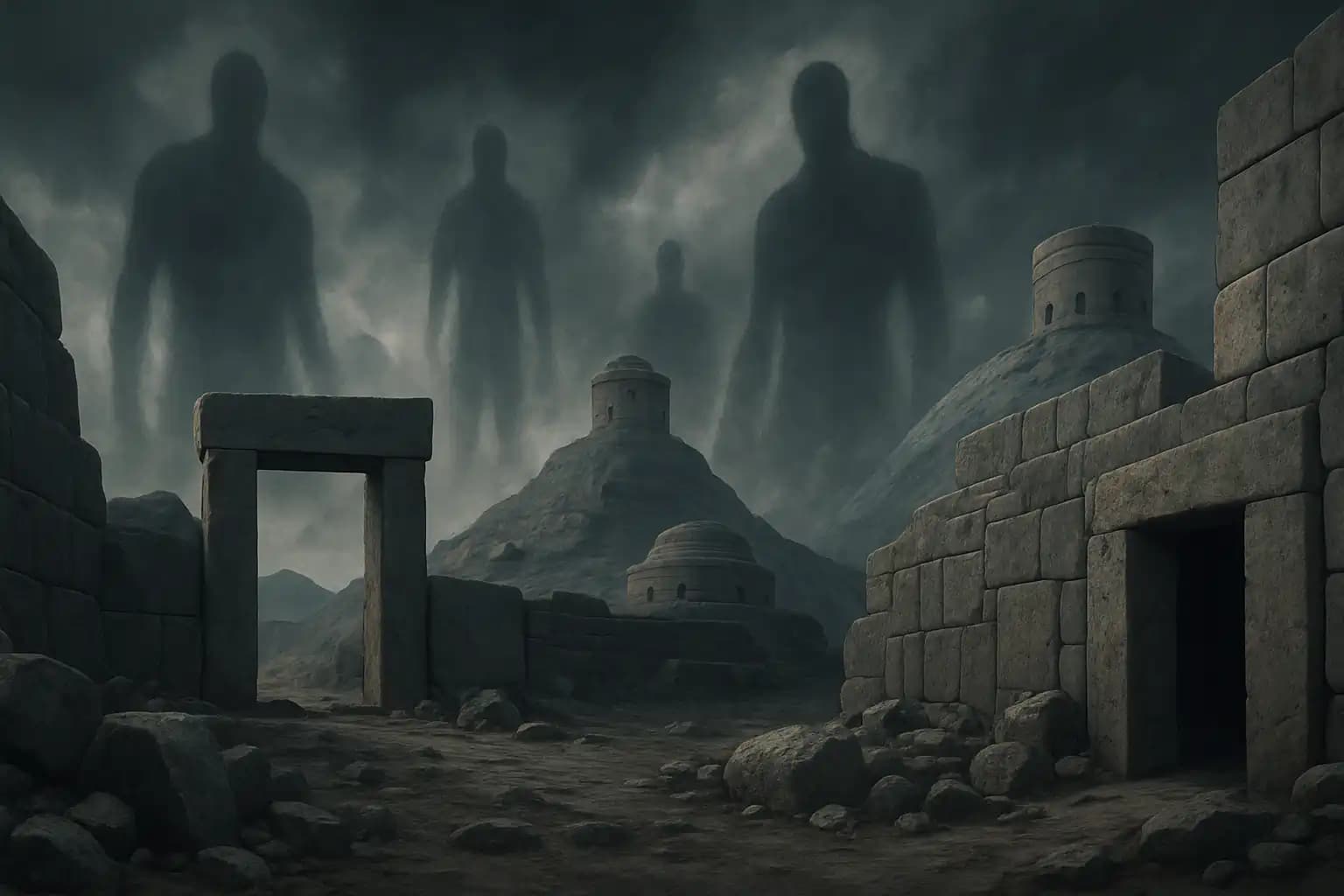Imagine standing at the foot of Peru’s Sacsayhuaman, dwarfed by colossal stones that challenge everything you learned in history class. Cyclopean masonry—an architectural technique using unyielding stones—appears globally, yet explanations feel as cold as granite. Are maritime trade routes, ancient technology, or erased chapters of human history at play, featuring giants, antediluvian science, or forbidden bloodlines?
Timothy Alberino, leading explorer in this field, holds nothing back. Fortresses like Sacsayhuaman, with their massive doors and stairs designed for enormous beings, echo similar patterns found in Egypt, Sardinia, and even rumored sites beneath Antarctic ice. Theories range from technological mastery lost to disaster—echoing resets in this review of cyclical cataclysms—to deliberate historical suppression by elite interests fearful of public awakening. Legends abound about giants or Nephilim as master builders, predating familiar empires and mainstream science.
Decoding Cyclopean Masonry: Impossible Engineering or Lost Knowledge?
Cyclopean construction leaves mainstream scholars uneasy. According to ARCHAEOTRAVEL’s architectural analysis, these walls consist of boulders crudely shaped, densely packed, and locked tightly without mortar—often so close that a strand of hair cannot fit between them. This method, seen in Mycenae’s and Tiryns’s citadels, extends to Indian and European sites. The term “Cyclopean,” as Wikipedia confirms, stems from ancient Greeks who believed only giant Cyclopes could have positioned such stones. Even modern machinery would struggle under that weight—are we witnessing unrecognized ancient technology or mythical strength?
These engineering marvels aren’t limited to the Mediterranean. The megalithic walls of Peru and Bolivia, with precisely angled joints and massive doorways, ignite debates about lost civilizations or technologies unknown today. Independent researchers discern similar questions in layers of secrecy surrounding Egypt’s oldest monuments, along with the controversial notion of massive megaliths beneath Antarctic ice—an idea dismissed by many yet never disproven. The drive to connect historical dots across time and geography proves irresistible, fueling a global debate akin to the mysteries of Egypt’s secret structures.
Megaliths of Peru, Egypt, and Antarctica: Connecting Ancient Giants and the Nephilim
Peru’s Sacsayhuaman, with its massive terraces and polygonal stones, serves as Exhibit A in disproving simple explanations like slave labor and copper chisels. The site features giant-sized stairs and doors, carved stone sockets, and earthquake-resistant fittings rivalling the precision of the Great Pyramid’s blocks. Similar megaliths appear in Sardinia and in remote allegations of Antarctic sites. Some studies, highlighted in speculative Atlantis and pole-shift studies, suggest a network of lost cities and hybrid rulers—the “giants” and biblical Nephilim—before cataclysmic events or a literal deluge obliterated them from cultural memory.
The giant theory, sensational as it may be, finds support in myths and unusual artifacts from India to South America. This thread connects reality with legend, driving investigations into Nephilim legends and their rumored return. While academics caution against overreach, the puzzle pieces—fitting together with uncanny precision—continue to be unearthed. Reports of hidden structures, relics, and mummified remains suggest this debate will persist for years.
Hidden Architecture, Rituals, and Astronomical Mysteries
If these cyclopean titans weren’t just fortress walls, what purposes did they serve? Cutting-edge theories connect these structures to ceremonial centers, star observatories, and even energetic technologies. When Egypt’s temples and pyramids are mapped with platforms like Sacsayhuaman, they often reveal astronomical alignments and ritual significance beyond modern city planning. Some theorists see in these alignments echoes of ancient knowledge lost to catastrophe—warnings similar to today’s concerns about future existential threats facing our society. Others highlight links to initiation rites, sacred geometry, and ley lines, merging science with mysticism in ways that frustrate establishment historians.
Regardless of origin or purpose, cyclopean sites worldwide defy neat models of “primitive” humanity. They appear to echo warnings—transmitted in stone—of knowledge destroyed or obscured, perhaps protected by secret societies and the “bloodlines” that conspiracy theorists claim still wield influence today, topics explored in-depth in investigations into elite control.
The Ancient World’s Greatest Cover-Up? Rewriting Human History in Stone
Who built these monumental structures—and why do mainstream academics hastily overlook their mysteries? One answer lies buried under bureaucratic denial and rigid timelines. However, a growing number of explorers offer an alternative: humanity’s story is longer, stranger, and more tumultuous than we realize, repeatedly reset by catastrophe, cover-up, or both—just as examinations of modern resets illuminate.
Whether you believe in ancient giants, lost high civilizations, or something more bizarre beneath the Antarctic ice, one thing is clear: cyclopean monuments form a global code, carved for those willing to question accepted wisdom. For further journeys down this rabbit hole—and to stay updated on revelations or cover-ups—make Unexplained.co your archaeological bug-out bag. History isn’t elusive. It lies right beneath our feet, waiting to be uncovered in stone.




